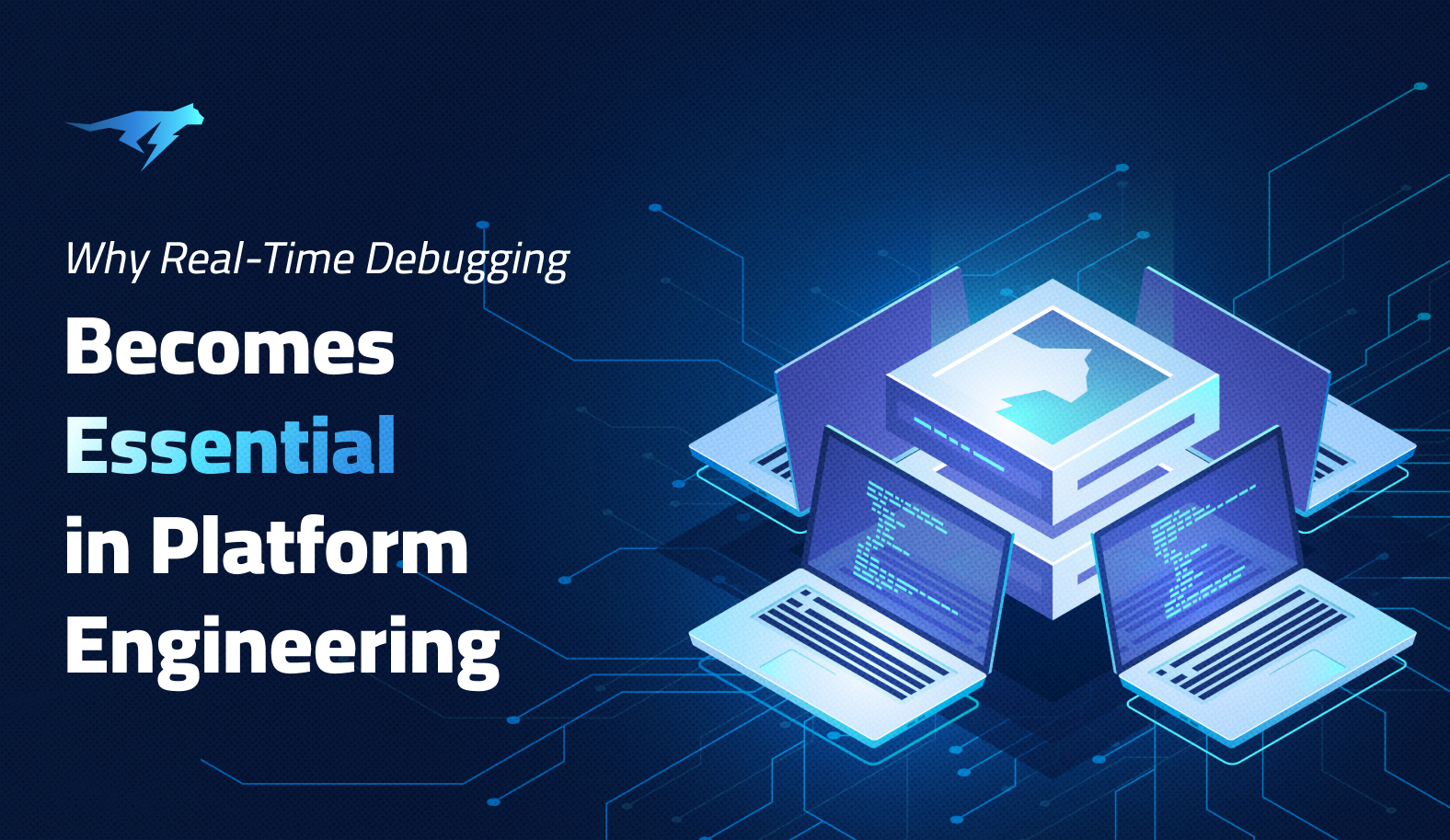

Live Debugging for Critical Systems
Live debugging refers to debugging software while running in production without causing any downtime. It has gained popularity in modern software development practices, which drives many critical systems across businesses and industries. In the context of always-on, cloud-native applications, unearthing severe bugs and fixing them in real time is only possible through live debugging. Therefore, live debugging becomes an integral part of any developer’s skill set.
This post will explore the various types of critical software systems where live debugging becomes imperative. It will also emphasize the broader strategies for live debugging of such applications.
Type of Critical Systems Where Live Debugging is Important
The definition of a critical system is that it must be highly reliable and retain its reliability as it evolves without incurring performance degradation or prohibitive costs.
Broadly, critical systems can be classified as follows.
Safety Critical Systems
Safety critical systems are systems where failure or malfunction can lead to loss of lives or serious physical injury. In many cases, the malfunctioning also has a second order impact in the form of environmental damage or ecological imbalance.
Software that manages such systems must be designed to control the operational aspects of the systems such that any malfunction has a limited impact on human life, as well as the local flora and fauna of the impacted region. The most obvious example of such a system is the avionics software installed on an aircraft that controls flight surfaces, engine systems, landing gear, and other auxiliary subsystems.
Mission Critical Systems
Mission critical systems are designed around a set of important goals. Therefore, they are intended to facilitate the completion of the goals with clearly stated trade-offs, no matter what hurdles are encountered in the course.
A commonly used mission critical system is map-based navigation software. Most users of Google Maps and other app-based navigation systems know how this software works. It guides drivers to drive to their destination along the road in minimum time. In this case, the mission is to reach the destination, and the trade-off is the time. Therefore, these systems are designed to recommend the best route to the destination in the minimum possible time.
Similar systems are also installed aboard aircraft, ships, and spacecraft with more complex trade-offs around fuel consumption and arrival times.
Business Critical Systems
Business critical systems are systems where failure can prevent an organization from completing important business functions or meeting key objectives. The higher order impact of such failures can result in revenue and reputation loss, eventually leading to degraded performance in the stock market or during subsequent fiscal quarters.
Common examples of software driven business critical systems are payment processing systems or customer support systems. Failure in such a system often disrupts the process workflow. If not addressed in time, such situations can grow out of control, resulting in revenue loss or a decline in the net promoter score for the organization.
Parameters Governing the Health of Critical Systems
The rules for live debugging of critical systems take a radically different approach. Firstly, these systems are designed in a fail-operational or fail-safe design methodology. In this way, these systems can continue functioning or safely shut down a subsystem in case of failure.
Live debugging of such systems in a production setup does not need the developer’s intervention to get into the innards of the source code and figure out the root cause. However, it is important to keep a tab on some key metrics that indicate the systems’ overall health. Let’s take a look at how these metrics can be calculated at a high level.
Mean Time Between Failures (MTBF)
MTBF is a reliability metric. It is a measure of the average time between failures of a critical system or its subsystem components. A higher value for MTBF corresponds to less frequent failures and is, therefore, considered desirable.
MTBF helps in further statistical analysis across all components of a critical system. Comparing MTBF across components can contribute to system design. For example, a subsystem with high MTBF requires less redundancy for fail-operational working. Similarly, a subsystem with lower MTBF must be improved via redesign or rigorous testing.
Mean Time to Resolve (MTTR)
MTTR stands for Mean Time To Resolve (the R sometimes also stands for Recovery or Repair). It is a maintainability metric that measures the average time required to resolve a show-stopper bug in a failed system or component.
MTTR is important to assess a system’s availability and serviceability from the end user’s perspective. A lower value of MTTR is always desirable. A higher MTTR most likely corresponds to inefficient diagnosis procedures or lack of skilled resources.
Mean Time to Acknowledge (MTTA)
MTTA stands for Mean Time To Acknowledge. It is the average time from when a failure is triggered to when work begins on the issue. It indicates how soon the RCA (Root Cause Analysis) is conducted to arrive at the source of failure. A higher MTTA is undesirable and can be indicative of overly complex system design.
The MTTA metric is always lower than MTTR since it takes less time to acknowledge a failure than to resolve it completely. If this is not the case, the critical system is most likely in an unstable state and requires further analysis in a staged environment.
Lightrun: A Reliable Observability Platform for Live Debugging of Critical Systems
Lightrun is a developer-centric observability platform. It empowers developers to ask intricate questions on production deployment and get answers in the form of logs, snapshots, and metrics. This approach enables live debugging of critical systems without causing downtime or performance degradation.
Lightrun is well suited for tracking MTBF in critical systems by injecting timestamped log messages within the running software. This feature creates a stream of dynamic logs that can capture the health-related metrics of the system for proactive remediation. It is also designed for dynamic instrumentation, allowing developers to investigate the software runtime in real time, resulting in reduced MTTA and MTTR.
Lightrun has been proven to reduce the MTTR by up to 60%, resulting in faster bug resolution. All these achievements have a direct impact on improving customer experience and increasing developer productivity.
To experience what it is like to perform live debugging on running production software, sign up for a free Lightrun trial and get started within minutes with your Java, Python, Node.js, or .NET applications. If you’d rather know more before you start, feel free to request a Lightrun demo.
It’s Really not that Complicated.
You can actually understand what’s going on inside your live applications.




